An introduction to souzai - Japanese prepared food
What is souzai? Why is it so popular? Your intro guide to souzai, prepared food, in Japan
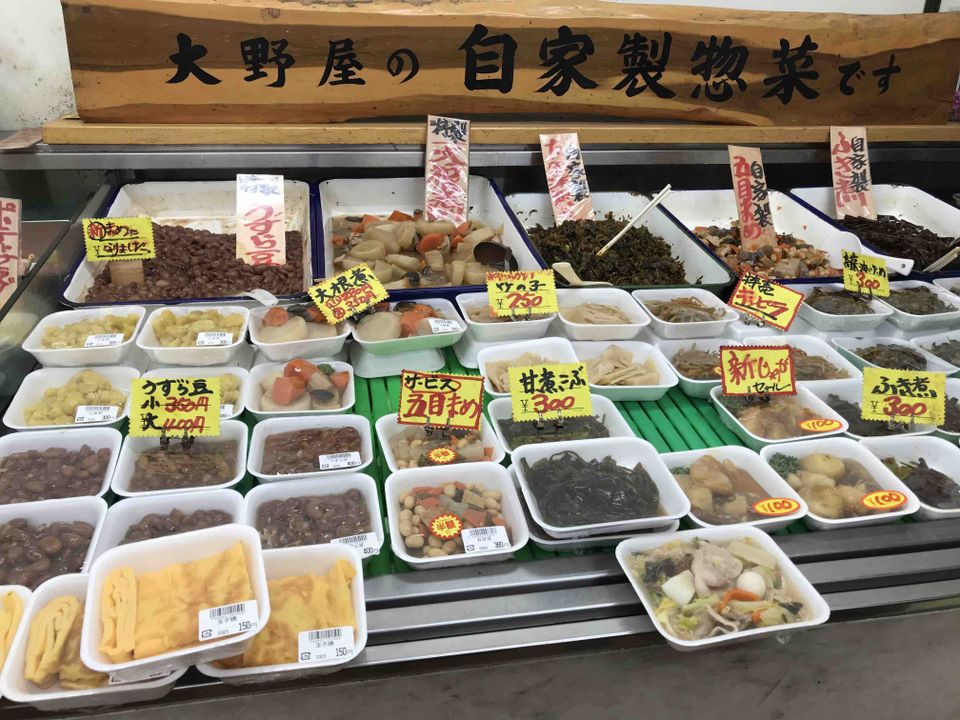
Souzai is a big part of Japanese culture. You can find it at any grocery store, convinience store, sometimes restaurants, and specialty souzai stores. Here is a introduction to souzai.
What is Japanese souzai?
Souzai is essentially any prepared food. It can also mean something that is eaten with ricem like a side dish. The best comparison I can give to someone from America is that it is like going to a deli in a grocery store (similar to Whole Foods or Wegmans or Foodland), or going to a gas station and picking up a hot dog. It can range from the famous bento to little side dishes.
Breaking down the term
I’m not a language expert, but breaking down the Kanji, or Japanese characters, helps me understand words (it can also explain the history of some words!). Souzai is written as 惣菜. 惣 means “all” and 菜 means “vegetables.” So literally “all vegetables.” Well that doesn’t make much sense. (I suspect there is a historical reason for this term.)
Upon researching, I found out that souzai is also called nakashoku, 中食, Which means “middle food/eat.” It may not make sense on its own, but if you look at the related terms:
| Kanji | Reading | Definition |
|---|---|---|
| 内食 | Inside; eat/food | To eat in/ home cooked food |
| 中食 | Middle, eat/food | Prepared food |
| 外食 | Outside, eat/food | To eat out |
Oh yes, now things are coming together. Souzai is something you buy, then eat at home -- somewhere between a home cooked meal and eating out.
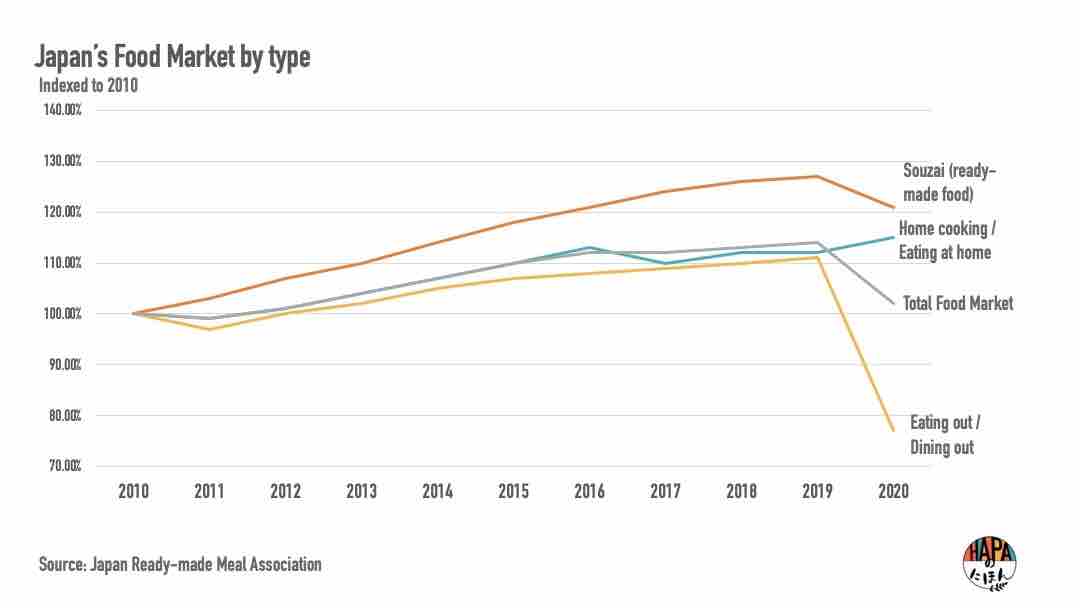
Souzai is outpacing the growth of other types of foods within the food market in Japan
Despite its popularity, souzai only makes up about 14% of the food market in Japan (by yen in 2019). However, it grew by 20% in the last ten years, outpacing the growth of eating in, eating out, and the market as a whole.
The most popular souzai
The following are some of the most popular kinds of souzai, according to a survey conducted in 2021 by the Japanese Souzai Association (yes, it exists)…
The most frequently purchased souzai according to consumers:
- Bento
- Onigiri
- Karaage (Japanese fried chicken)
- Sushi
- Croquette
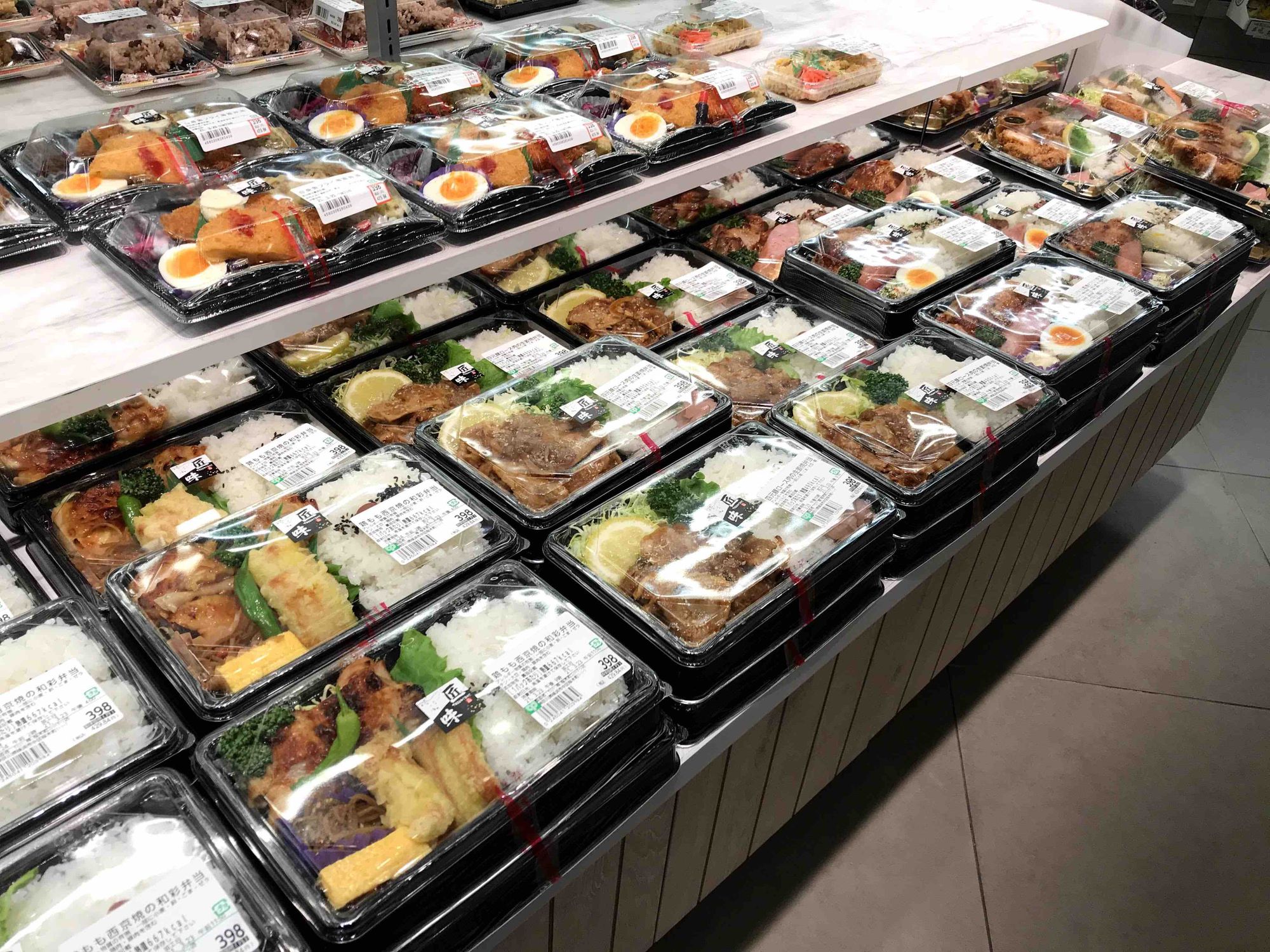
Bentos for sale!
Where Can You Buy Souzai?
Souzai can be purchased almost anywhere. The most common places are the supermarket, convenience stores, specialty souzai stores, and the basement of department stores (don’t let the description fool you: the basements of Japanese department stores are a magical place.)
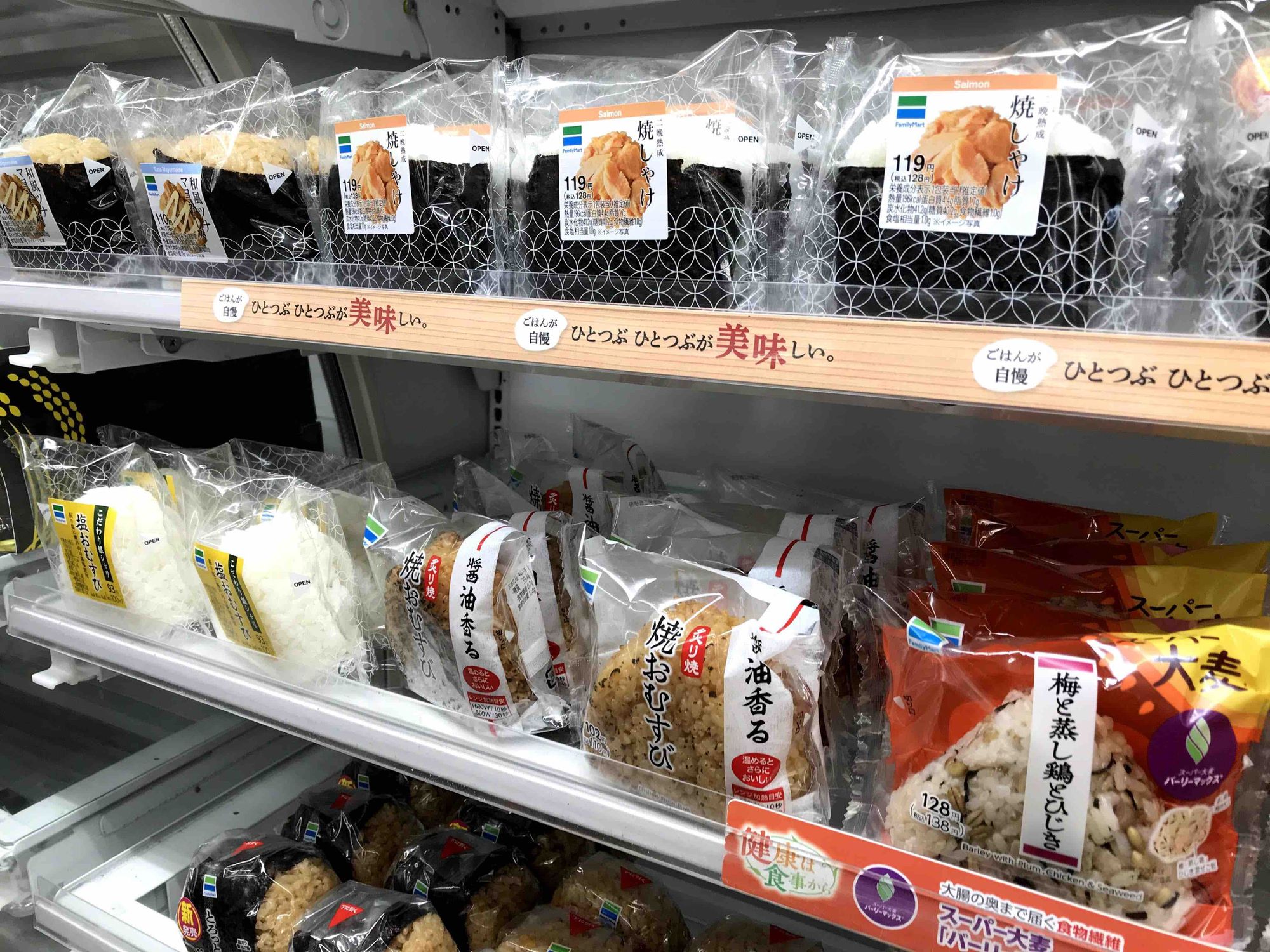
Onigiris at a convenience store
Why is souzai so popular?
After doing this research, I truly wondered, “Why is souzai so popular in Japan?” Is it the workaholic culture? Is it because there are more women working? Is it because traditional Japanese meals have multiple side dishes and it is a pain to cook them all? I was disappointed by the English search results. Souzai is such a large part of modern Japanese food culture. Why wasn’t anybody talking about this?
Upon some basic research, these were the main findings:
- Busy nature of Japanese work culture
- Increase of women in the labor force
- Increase in the number of single-person households
But I wanted concrete evidence. I came upon an article from the Japan times in 2002 titled “Prepared foods seen growing in popularity.” Interestingly, the souzai culture of Japan had only become more popular in the early 2000s.
Yes, this makes sense, but I wanted data. So I decided to do some basic stats.
Some basic statics
I found data from the OECD and World Bank on female labor force participation rates and female to male worker ratio. Furthermore, I collected data on the amount of single households from the Official Statistics of Japan. Then, with the data from the souzai association, I ran a regression with the data. Yes, I know it’s not enough data to be statistically significant. I am not claiming causality or any results. Furthermore, I was unable to control for any variables, etc. But, here is the output.
It appears there could be evidence for female workforce participation.

Whereas the correlation with single-person households is slightly weaker.
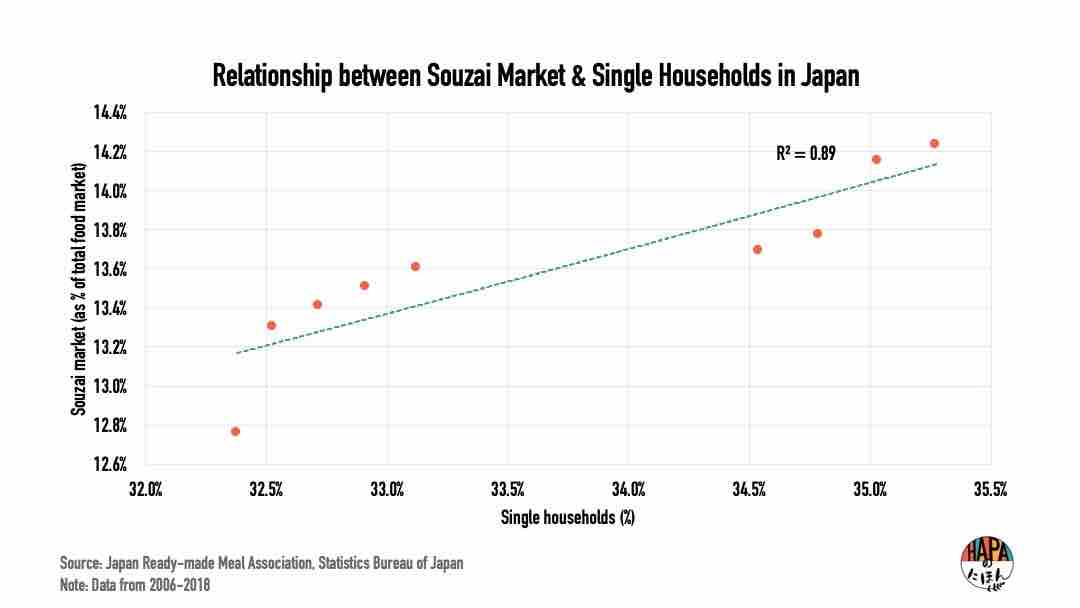
[Disclosure, I am not a statistician, and only have basic statistics experience from a handful of basic classes at university. If there is a flaw, please let me know.]
Final thoughts
If only there was more data and time. It would be very interesting to go into more depth. Looking at this data, I have other questions too. What are the cultural implications? How has health changed? (There is a study published in 2019 that shows decreased quality of diet.) How are women viewed who put souzai on the table on a regular basis?
Souzai is a part of everyday life in Japan. No matter where you go, it is something that you will come across. On a peronsonal note, if you ever travel to Japan, aside from eating at the restaurants, I strongly encourage you to experience the souzai culture of Japan. Go to the store and have yourself a picnic.

